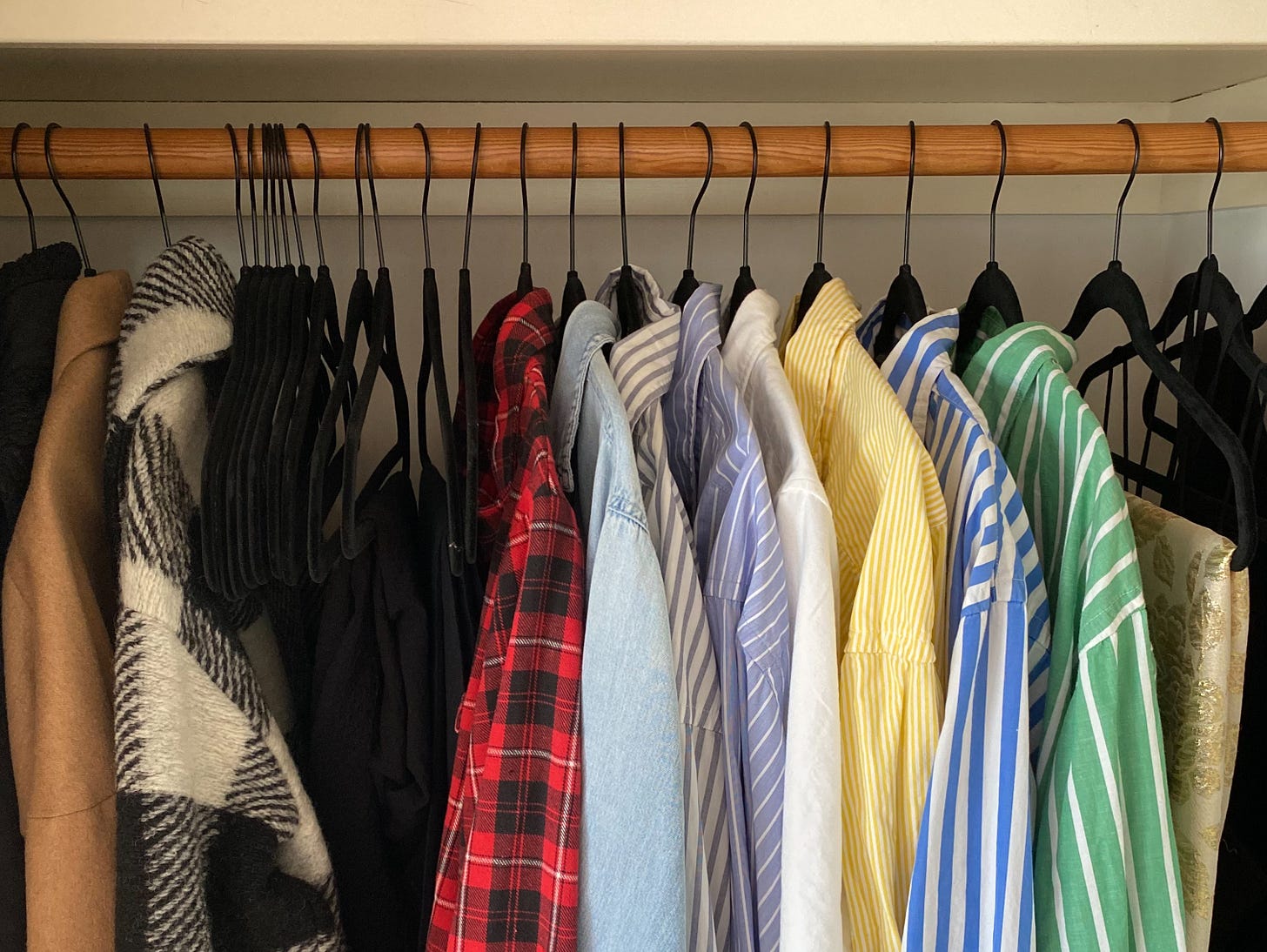There are few objects we have a more personal relationship with than our wardrobes. The wardrobe, consisting of all of our clothes and accessories, makes up the bulk of our exterior objects. It is less of a designated place within the home and more of a collection of pieces.
The wardrobe is what we dress in when we head out for the day, what we slip into when we return home, and what we pack when we travel. Our clothes are simultaneously highly utilitarian and incredibly emotional. From hats and sunglasses to parkas and snow boots, our clothes protect us. They function as our armor, keeping us safe from the elements as we move through our days.
Of all the things we interact with daily, clothes are the most personal, the most intimate. They adorn the body directly, making this a near-constant relationship. What we wear has a profound impact on how we feel. No matter how moving a piece of art is, it does not accompany us through the world. We carry our clothes with us, imbuing them with our energy through proximity. A signature tee shirt or favorite pair of jeans becomes a piece of us, a signature look and an extension of self.
Identity is deeply tied to the wardrobe. Like it or not we can tell a lot about a person by the way they present themselves. Our clothes speak for us, often before we do. They offer an opportunity to visually communicate who we are and what we are about at a quick, cursory glance. When there is a cohesion between our inner being and the outer expression of it, we feel good.
When our wardrobe feels off, we feel off. When our clothes don’t fit we feel like strangers to ourselves. A disconnect between who we consider ourselves to be and how we are conveying that is jarring to the system. Ill-fitting clothes are a near-constant distraction.
Clothes are our first opportunity to communicate who we are and what we are about when we enter a room. The wardrobe is one of the most powerful visual mediums at our disposal. Our clothes are our tools. If our space is the setting of our life, then our clothes are the costumes. Whenever we seek to reinvent ourselves the wardrobe plays a major part in that.
We dress in specific ways to convey underlying emotions. It’s the difference between throwing something on to run to the store and very intentionally selecting a special outfit for a date or a job interview. The familiarity of a favorite piece is calming. There are few sweeter sensations than slipping into something more comfortable at the end of the day.
The wardrobe offers us the opportunity to control the narrative. There is a reason certain pieces elicit specific responses. A suit conveys seriousness, while sneakers speak to practicality. There are so many variables we cannot control in our lives, but having a dialed-in wardrobe gives us an energetic boost. With the right set of tools, we can handle what life throws at us. A well-curated wardrobe has our back, keeping us prepared for any adventure that pops up.
Designing the wardrobe is a slow, considered curation. It requires honesty and contemplation. Not everything needs to work together, but everything needs to work. So often we rush to fill a momentary wardrobe gap without considering the larger picture of our lives. We wind up with pieces that work once, instead of pieces that work often. Honesty is required. Are we only buying ball gowns and living in a fantasy world or are we so mired down in our day-to-day reality that we have nothing to wear when a spontaneous event arises?
Are we creating a wardrobe that truly works for our reality? Our clothes are the workhorses of our lives. They do it all so we can too. The right wardrobe offers us an easy confidence boost. We can easily step into a new character, role, or identity with a quick costume change. With the swap of a piece, we can embody a whole new persona. A considered wardrobe, just like a considered home, speaks for us.
TO CONTEMPLATE:
Where does your wardrobe live? Is it a closet, armoire, dresser, or another combination? Are there any metaphors present in the way they are organized?
The next time you get dressed, pause. Take the time to assess your outfit. How do you want to feel? How do you actually feel? How is your ensemble helping you to convey that (or not)?
Consider your wardrobe as a whole. Does it feel cohesive? Does it feel like an extension and expression of you?
-MRD






